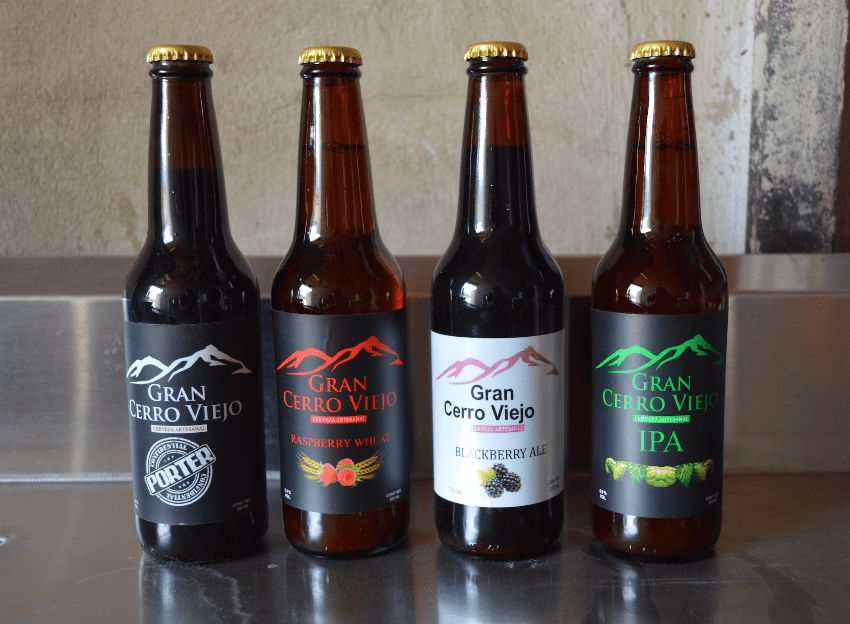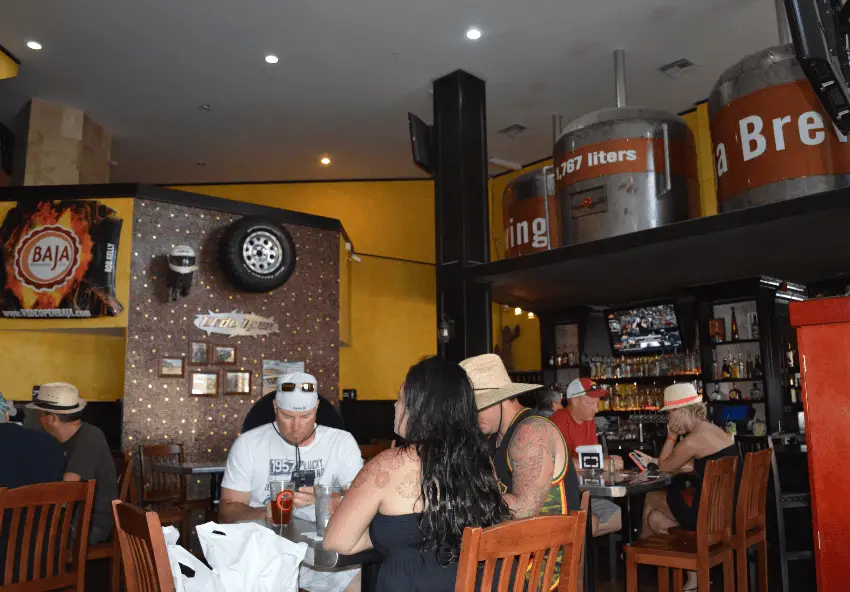Most of the world knows about Corona, Tecate and Dos Equis. These and other brands have made Mexico the world’s number one exporter of beer. However, over the past three decades, the country has developed a craft beer industry, which may have a similarly bright future.
A little history
Depending on your point of view, craft beer in Mexico is either centuries old or a recent phenomenon. In 1544, Alfonso de Herrero founded a brewery near Mexico City, but it failed a few years later. In the colonial period beer was an imported luxury good, and massive consumption only began in the 19th century when German immigrants established breweries. In the 20th century, many of these breweries became consolidated as the two brewing powerhouses of today: Grupo Modelo and Cervecería Cuauhtémoc Moctezuma (now legally Heineken México).
Beer brewed before mass-production is of course “craft beer” (cerveza artesanal in Spanish), although the term is modern.
Establishing “modern” craft beer in Mexico
Mass production led to a kind of homogenization in order to achieve mass appeal. A movement in the U.S. looked to revive more beer styles, and by the 1990s, American homebrewers, microbreweries and brewpubs were catching the attention of beer lovers in Mexico, says certified beer sommelier and beer historian Guillermo Ysusi.

“The consensus is that the first craft beer brewer [in Mexico] was Gustavo Rodríguez in Mexico City,” Ysusi says. Rodríguez discovered U.S. microbrews visiting Texas in 1993, purchasing a beer-making kit in 1995. Five years later, he opened Cosaco, which has been going strong ever since.
Other craft beer establishments appeared in the late 1990s and early 2000s, including Beer Factory in Mexico City, Sierra Madre Brewing Company in Monterrey and Minerva in Guadalajara. Despite their current fame, Baja California breweries would only get off the ground almost a decade later.
Ariette Armella of the Mexican Association of Craft Beer Brewers (Acermex) says that home brewing is still popular in Mexico, although there are no statistics available to back this point. She adds that many of the smallest microbreweries are run out of people’s homes.
Craft beer culture

Lacking strong ties to an agricultural region, craft beer is largely an urban phenomenon. Brewers and drinkers tend to be younger and more affluent, often drawn initially by the beverage’s ties to the U.S. and Europe.
According to Armella, “The U.S. is the reference point for quality for Mexican craft beers and there is significant cultural and professional exchange among brewers on both sides of the border.” Acermex and the Brewers’ Association, its U.S. counterpart, have created the Together We Brew program specifically to enable this.
Mexico City has the largest market for sales, but Baja California produces the most craft beer. Mexico City has a long history of adapting outside foodstuffs into its cuisine, while Baja’s brew scene overlaps with its wine, with both being carefully paired with its internationally recognized fine dining. Both areas now have beer sommeliers and other experts and both offer tours of breweries.
Mexican brewers are not simply reproducing U.S. beers but are also experimenting with “Mexicanizing” them, adding flavors such as cacao, regional fruits, chili peppers and more. Some of the more interesting twists include Falling Piano’s bread-flavored Day of the Dead beer, Gran Cerro Viejo beers flavored with berries from Lake Chapala, and yes, a cricket-flavored La Grilla from Querétaro.
Craft beer events have been growing in popularity over the past decade. The largest of these is the Expo Cerveza, held in Guadalajara in the spring and again in Mexico City in the fall (this year on October 20-22). Other important events include the Ensenada Beer Fest and the Festival de la Cerveza in Monterrey, but booths selling local craft beer can be found at smaller events all over Mexico.
Current craft beer market in Mexico
Despite 30 years of brewing, craft beer remains a very niche market in Mexico. Acermex estimates that Mexico’s 2,000 craft breweries produced 330,000 hectoliters (33,000,000 liters) in 2022. But it pales in comparison to the 141 million hectoliters produced in total that same year in Mexico.
About half of craft beer production is in the north. Baja California leads with 18% of Mexico’s total, followed by Nuevo León (13.8%). In the center of the country, most beer is produced in Jalisco (17%) and Mexico City (10.6%).
Despite a downturn during the pandemic years, the past decade or so has been good for the industry. More beers are available more widely. In some cases, like Cucapá, it is because they were bought out by one of the big brewers, but others like Tempus (Monterrey) and Minerva are expanding on their own. Acermex also states that about 5% of sales are now exported, with brands like Colima, Minerva, Ocho Reales, Rey, Loba, Hercules and Monstruo de Agua available in the U.S.
Challenges to the industry
However, establishing a market share where two companies sell over 90% of Mexico’s beer is not easy. The main issue is price. Cost-conscious Mexicans simply won’t pay double or triple the price of a commercial beer, says Montiel Hernández of Ayutla Distillery and Brewing.
Being more expensive to produce, craft brewers must market similarly to wine in finer restaurants and other outlets able to help customers make selections. Craft brewers must also compete with commercial brewers for supplies, malt in particular and often have to import. Water usage, especially in the arid north, is also an issue, which was aggravated by last year’s drought.
Twenty years ago, I tried my first craft beer in Mexico, finding it by chance as a curiosity. It’s safe to say that Mexican craft beer has now gone way past novelty and become a world worth exploring for beer lovers.
Leigh Thelmadatter arrived in Mexico over 20 years ago and fell in love with the land and the culture in particular its handcrafts and art. She is the author of Mexican Cartonería: Paper, Paste and Fiesta (Schiffer 2019). Her culture column appears regularly on Mexico News Daily.
